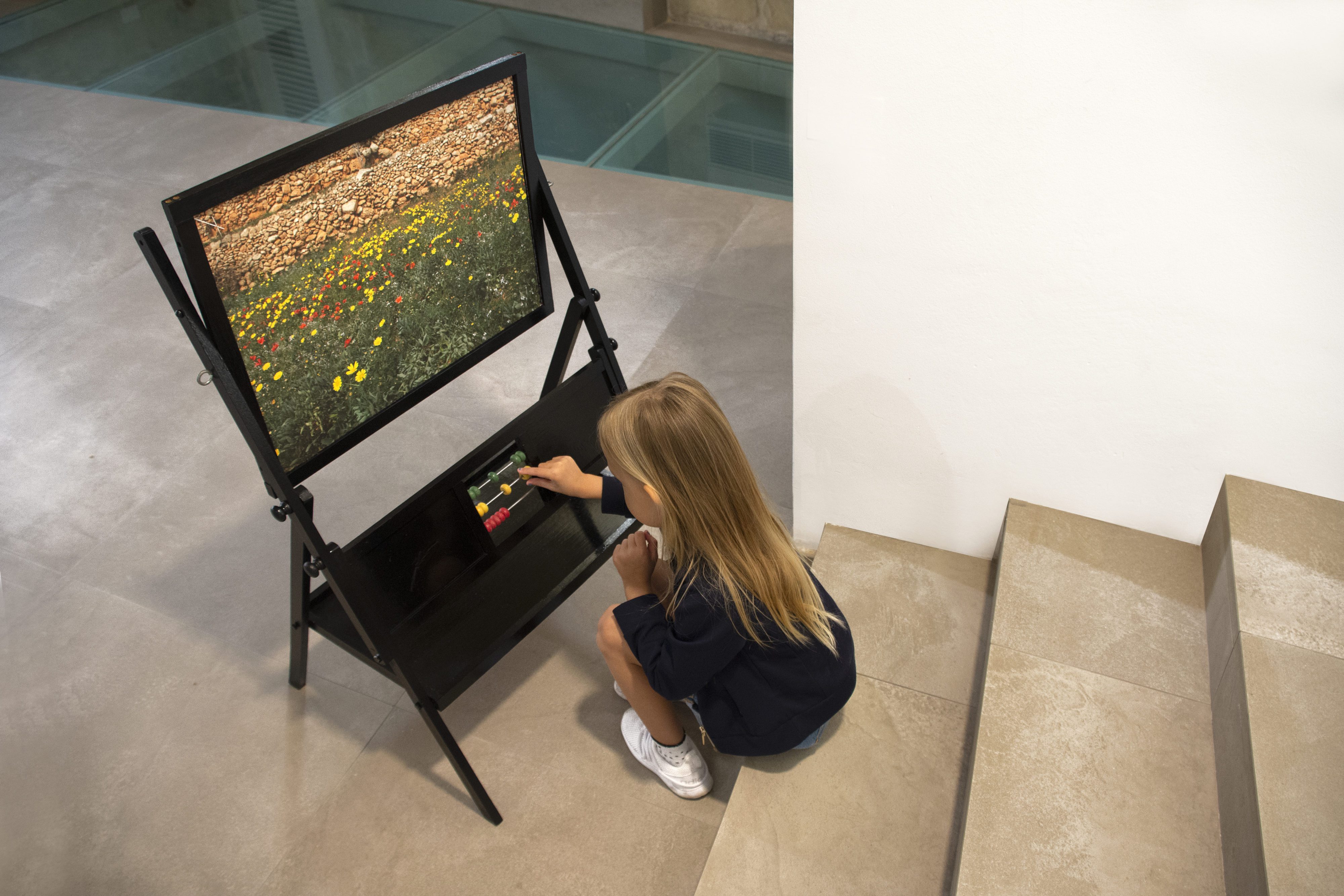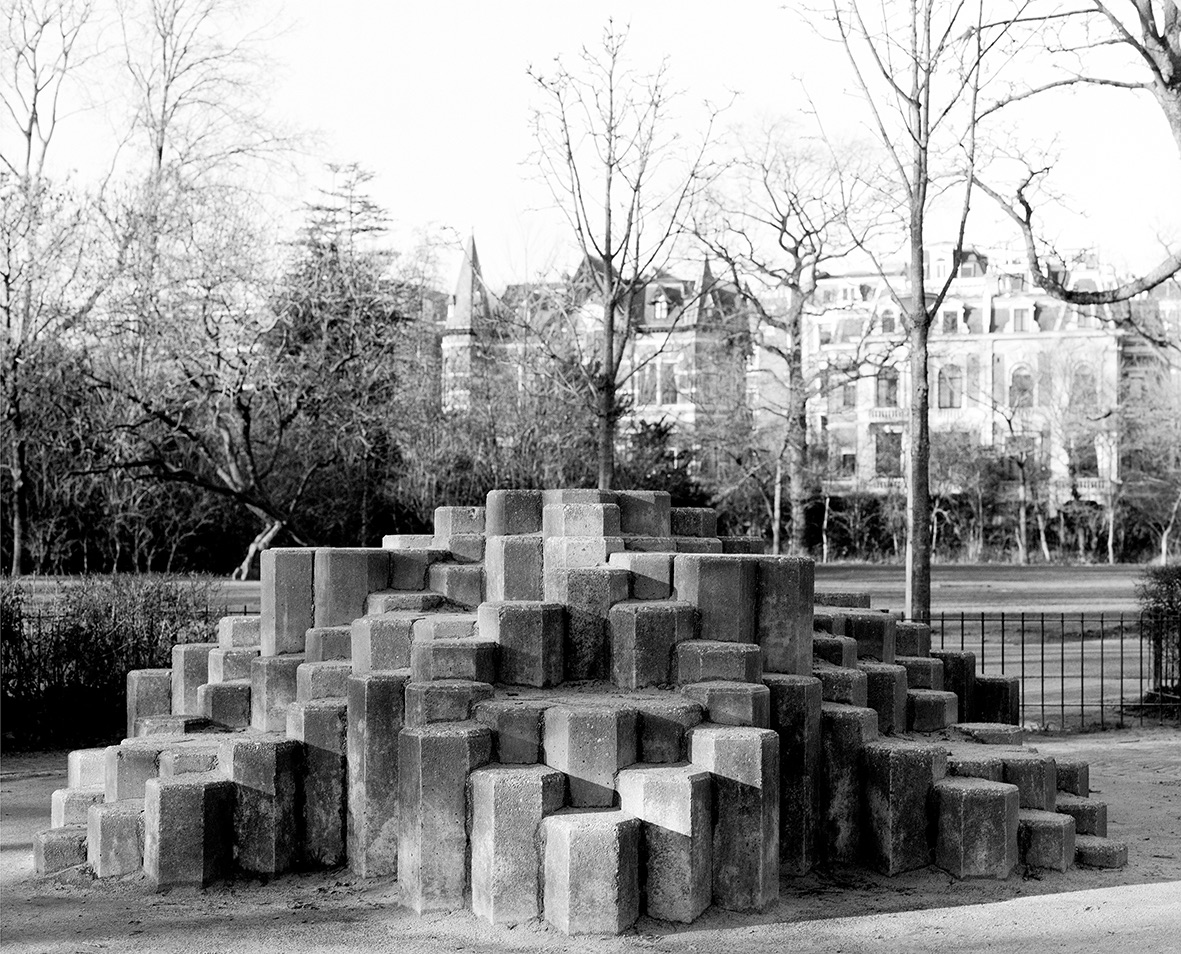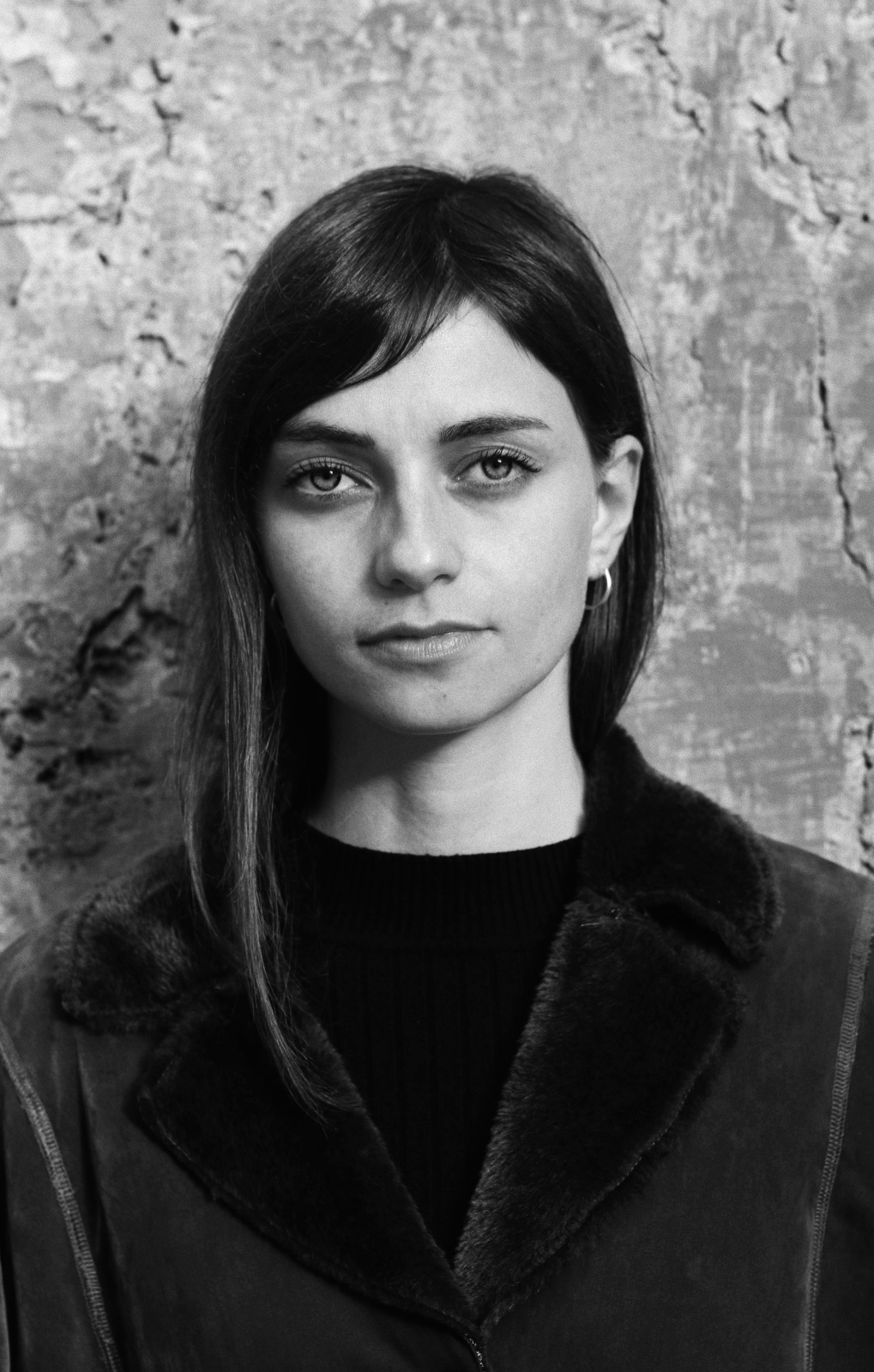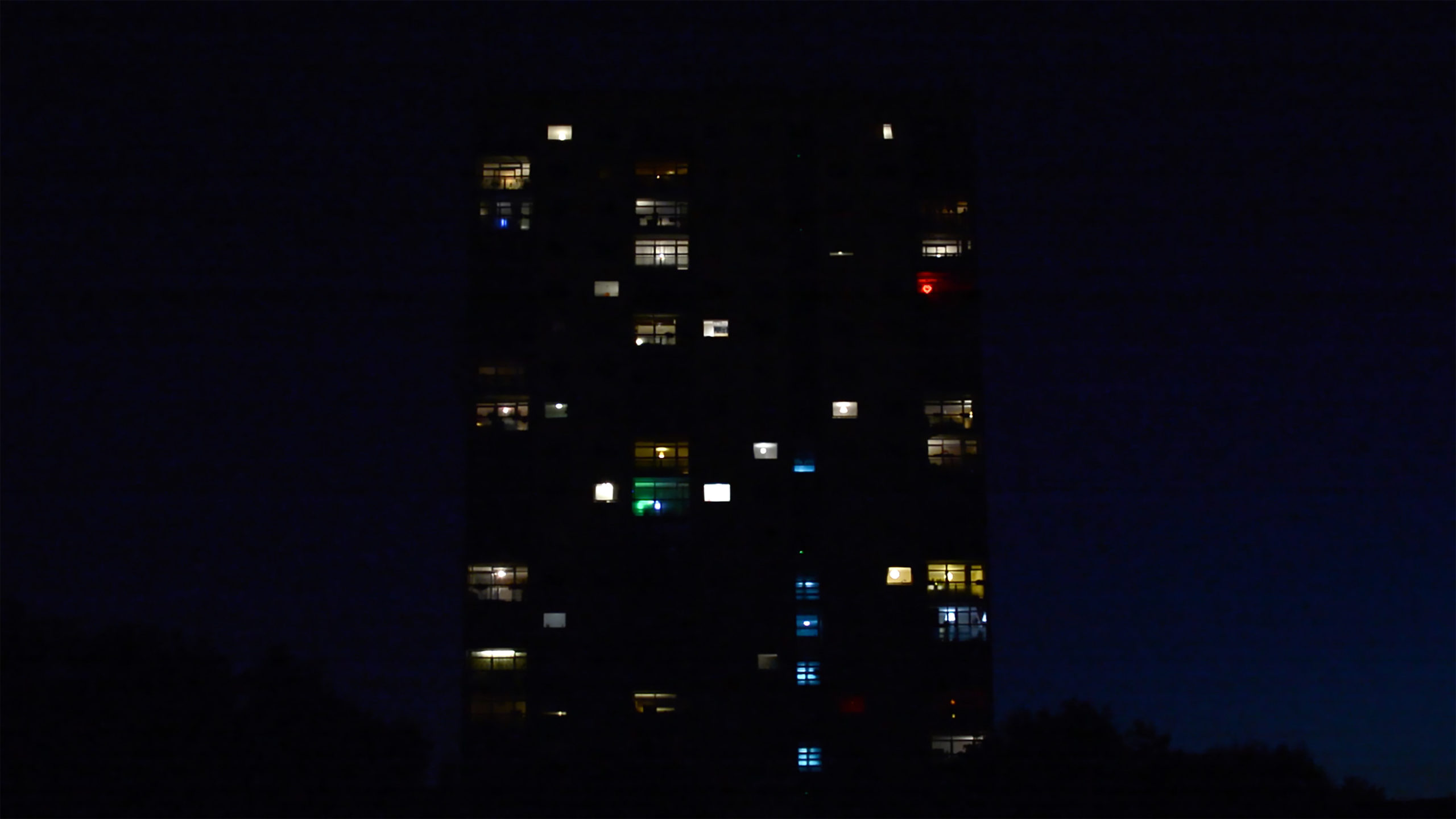Surrounded by ever-changing environments, it is crucial to take the time to pause and reflect. That’s exactly what Maltese-French artist Laura Besançon does in her exhibition Playful Futures — and she’s inviting you to play along. The exhibition attempts to refresh our perspectives on the changing contexts that are beyond our control.
Alone, Together
A highlight in the exhibition, ‘Alone, Together’, kicked off Besançon’s artistic research and practice. She invited residents of an apartment block to participate in an artwork, which she documented on video.
Besançon sent out letters to the residents of several tower blocks in London, where she was reading for a master’s degree at the Royal College of Art. ‘I told them to listen to a particular song on a particular night at a particular time and to play with their lights to the beat of the music.’
Fourteen buildings and lots of letters later, she succeeded, resulting in a musical and architectural piece of art that leaves viewers in awe. ‘By switching lights on and off, the structure of the building changed. Suddenly this building lit up, becoming a playground.’
It was all about creating a connection between people she didn’t know: ‘I wanted it to be a spontaneous moment between people who are literally living next to each other but might not even know each other. Especially in a city that’s all about work and rigidity.’
‘In terms of participation, I found it really intriguing; people just doing it for the sake of being part of something,’ she adds.

Inspiration
One of her main inspirations for Playful Futures was Dutch architect Aldo van Eyck, who designed over 600 playgrounds after the Second World War, 17of which remain today.
She travelled to Amsterdam to see and photograph the remaining playgrounds herself. The structures are minimal, and that’s what she likes about them: ‘They were meant to stimulate the kids’ creativity, because they were minimal structures. Nowadays, you’ll literally have the structure of a boat, leaving little to the imagination.’
To that, she adds: ‘It’s more important to imagine what things could be than what is literally said.’
When she was living in London, in a building surrounded by high-rises, her window offered a look into the world. Or better said, into these buildings. As she stared out, she noticed that something about the architecture was kind of musical.
The colours of the different curtains and lighting reminded her of music software, synthesizers, and drum pads. She discovered the similarities between the two: ‘There’s something about music and architecture — they share rhythm.’
As she talks about the beneficial psychological effect of music, she relates how she wanted to create a connection between people who live together in this concrete jungle but rarely take a moment to connect with each other.
About the documentation of her project ‘Alone, Together’, she says: ‘I was always inspired by what I saw, especially as a photographer. I want to show what is already there, but I ask myself how it can be manipulated or experienced in a different way. I want to play with it.’
Her idea of playing the same song in different apartments of the same building tied her architectural and musical ideas together, and she rediscovered where her art practice was headed.
She documented the artwork on video, and the musical and visual aspects come together to show the connection between single souls in the city. Without knowing whether their neighbours are participating, over 15 residents play their lights to the beat of the same song.
Besançon adds that she wanted to reverse back from videography to the real human experience. The artwork is documented on video, but it makes you wonder what it would have been like in real life, with real people.
‘The creation of a work between people creates a moment in history and a sense of place. A shared moment and a co-created artwork.’

Photography as an interactive medium
Being inspired by what she sees, Besançon realised she liked photography while studying Communications, though not in the way that it was taught. Instead, turning towards a fine art approach in researching her fields of studies and in the way she used photography as a medium. She stuck to photographing and learnt to become more expressive with the medium.
We walk past a photograph framed on a children’s school board, showing innocent yellow flowers on one side and dull apartment blocks on the other. This duality is emphasised as the viewer has to flip the board in order to see these two aspects.
Her photographs are framed and displayed in unconventional ways, with a hint of cheeky criticism towards construction and the built environment. Besançon invites viewers to walk around and through the exhibition, touching and altering things where they can, to engage in the structures.
‘I like to take photos and present them in original ways, inviting people to take action. We can show things in multiple ways. I try to break out of the frame.’
Art in society
About the role of artists in modern society, she says: ‘I focus a lot on the idea behind the work which usually develops from an intuitive reaction towards something, a gut feeling. It always has to have some kind of concept behind it.’ Playful Futures aims to address universal ideas, bringing them to people’s attention.
It shows how it takes someone to start something. Then there is a domino effect: from one person trying to create something, there’s a whole building switching lights to the beat of music. Every individual is important. ‘Without the individual action, there is no collective action/outcome,’ she says.
Playful Futures is also a suggestion to play. Besançon’s interactive way of framing and presenting her work allows viewers to take a stand. ‘It’s about raising awareness and expressing anger, in a way. But also to promote a discussion about the changing surrounding landscapes.’
In one particular work, she stacked vintage poker chips on top of each other, representing literal towers of money. In relation to the development of Malta’s environment, she said: ‘How do you show anger about money and towers? You smash them.’
Besançon concludes: ‘I think it’s important to show these universal ideas. I make reference to action in the photograph — it could be the start of something, of a revolution. There is a kind of provocation in the work, which makes you wonder: what if things were different?’

To add to the exhibition’s aim of exploring these playful futures, the artist invited international collaborators she met in London to exhibit their work. These are Tom Lovelace (UK), Ignacio Barrios (Spain), Dawoon Kim (South Korea), Tom Medwell (UK) and Gökhan Tanrıöver (Turkey).
If you are ready to be challenged and excited to play, visit Playful Futures at the Valletta Contemporary. The exhibition is running until June 6. Find more info on the exhibition here and Laura’s facebook here.





Comments are closed for this article!